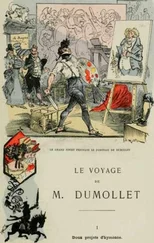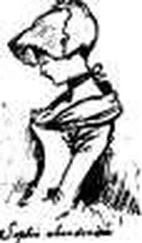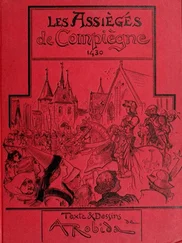Albert Robida - Yester-year; ten centuries of toilette from the French of A. Robida
Здесь есть возможность читать онлайн «Albert Robida - Yester-year; ten centuries of toilette from the French of A. Robida» весь текст электронной книги совершенно бесплатно (целиком полную версию без сокращений). В некоторых случаях можно слушать аудио, скачать через торрент в формате fb2 и присутствует краткое содержание. Жанр: Старинная литература, на английском языке. Описание произведения, (предисловие) а так же отзывы посетителей доступны на портале библиотеки ЛибКат.
- Название:Yester-year; ten centuries of toilette from the French of A. Robida
- Автор:
- Жанр:
- Год:неизвестен
- ISBN:нет данных
- Рейтинг книги:4 / 5. Голосов: 1
-
Избранное:Добавить в избранное
- Отзывы:
-
Ваша оценка:
- 80
- 1
- 2
- 3
- 4
- 5
Yester-year; ten centuries of toilette from the French of A. Robida: краткое содержание, описание и аннотация
Предлагаем к чтению аннотацию, описание, краткое содержание или предисловие (зависит от того, что написал сам автор книги «Yester-year; ten centuries of toilette from the French of A. Robida»). Если вы не нашли необходимую информацию о книге — напишите в комментариях, мы постараемся отыскать её.
Yester-year; ten centuries of toilette from the French of A. Robida — читать онлайн бесплатно полную книгу (весь текст) целиком
Ниже представлен текст книги, разбитый по страницам. Система сохранения места последней прочитанной страницы, позволяет с удобством читать онлайн бесплатно книгу «Yester-year; ten centuries of toilette from the French of A. Robida», без необходимости каждый раз заново искать на чём Вы остановились. Поставьте закладку, и сможете в любой момент перейти на страницу, на которой закончили чтение.
Интервал:
Закладка:
For a while, wigs of the Louis XIV. and Louis XV. fashion were adopted, but only by ladies ; these wigs were of fair, or brown hair, or even of tow, for those who could not afford the more expensive kind. With wigs came powder, a kind of starch in which pomade was mixed with powders of various kinds, from the finest, perfumed with violet aud iris, to plain Hour for the use of simple country ladies.
Patches (which reappeared in the eighteenth century), also came into fashion at this time, but were at first as large as plasters, and less becoming than the coquettish ' assassines ' of a later date.
The women of the people, and the smaller bourgeoisie, still wore the hood of former days, a modest head-dress, while the ladies of the upper classes, whose hair was bedecked with beads and jewels, wore hats or the plumed toque.
After so many gloomy years, people were happy to live and breathe, yet a fashionable lady was bound to be strapped up in a hard and rigid corset, strongly armed with whalebone, an actual sheath, which came down in a point upon lier skirt, all of a piece, without any indication of form. It must be said, however, that the women indemnified themselves for this terrible article of attire by wearing bodices, also cut down in a point, and so liberally,
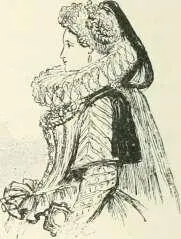
Court dress under Henri IV.
that His Holiness the Pope thought it necessary to interfere, and to threaten those who persisted in baring their necks to excess with excommunication.
This menace had no great effect, the penalty attaching to the next workl only ; large ruffs, and upstanding collars of superb lace mounted on wire, continued to encircle and enhance the charms which were disclosed by the accommodating bodice. Fine lace looks so well near the skin, it throws out the shape and whiteness of the shoulders, and the shoulders show off the marvels of Venice or Flanders point, the jewel-work of the needle, to perfection.
Enormous sleeves, which were not sleeves, were attached to the bodice. These were open wings, hanging down very low from the shoulders, trimmed with closely-set buttons that did not button. The real sleeve showed beneath, was padded and raised at the shoulder, and had cuffs at the wrist called ' rebras.'
Skirts were less balloon-like than formerly, the farthingale was more moderate, it now resembled a bell, hanging straight and heavily, or rather the big drum of a Swiss battalion, but the hips were padded in cupola shape, and marked out grotesquely by a row of stiff" puffings of the same stuff as the o-own.
It was difficult for women clothed in such a style to have a light and graceful gait; nevertheless the ladies of the period liked those cumbrous skirts, and the ideal of elegance was to affect the waddle of a duck in walking, so as to give them a rhythmical swing.


The Fair Gabrielle.
A correctly-dressed lady wore three skirts under her gown, all of different colours, and variously trimmed. These three skirts she was supposed to show, by lifting up her gown in a skilful and elegfant manner.
There was plenty of choice aiuoug tho fashionable stuffs and colours, within the following series of names, as comical as those which were afterwards invented in the whimsical eighteenth century.
Sad friend colour, doc's IcUy, svralcltcd face, ord colour, fading flovKr, dying nionlxy, gladsome widow, lost time, dcad-cdivc, side SxKiniard, mortal sin, common liam, cJiimney-sivccj), &c., cir.
The Regency of Marie de Mëdicis was a period of transition between the fashions of the sixteenth, and those of the seventeenth centuries; the real Louis Quinze costume did not shake off the last vestiges of the Renaissance fashions until about 1630, at the time of the reformatory edicts of Richelieu. These edicts condemned ladies to rest content with simpler stuffs and under-clothing by prohibiting cloth of gold and silver, gold lace, embroidery, trimming in gold thread, and fine laces, and so forced the tailors, who cut and made the clothes of both men and women, to invent new shapes.
During the earlier portion of this reign fashion cast off much of its heaviness, the farthingale became beautifully less, the ugly
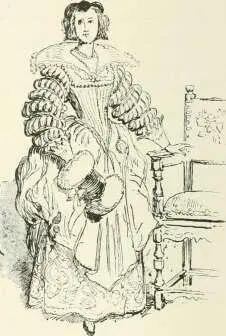
After Callot.
padded roll above the hips disappeared, and was succeeded by a great bunch of the drawn-up folds of the uuder-skirt.
The farthingale, thus snubbed in its home, crossed the frontier to reign in Spain under the name of'guarde-infante,' and presently assumed proportions so vast, that, in order to arrest their growth, the authorities, imitating those of France, resorted to edicts. Seizure and public exhibition of the prohibited articles was added to fines, and the strict application of the decree was met by sturdy resistance, and even by tumults and bloodshed. Nevertheless, so long was the life of the farthingale on the other side of the Pyrenees, that the gallants of the court of Louis XIV. beheld it, worn by the ladies of the Spanish Court at the famous interview in the lie de la Conférence where the marriage of Louis with Marie-Thérèse was arranged.
In France, taste, richness, and display, the multiplicity of ornaments, the wearing of a quantity of jewellery, became fashionable again, and the ladies, even those of the mere bourgeoisie, indulged in a superfluity of costly clothes and trinkets.
How "a lovely woman conducts herself in dress," a satirical poet tells us.
"II lui faut des Ctarcans, cliaînes et bracelets, Diamants, affiqiiets et montants de collets. Pour charger un mulet, et voire davantage — Il lui faut des raLats de la sorte que celles Qui sont de cinq ou six villages damoiselles ; Cinq collets de dentelle haute de demi-pié L'un sur l'autre montés" — Although farthingales were smaller, ruffs had gone on growing in height and size ; the great portraits by Rubens, and afterwards those by Van Dyck have preserved the semi-circular ruff of the latest period, sweeping out behind the head.
We may derive full information concerning Parisian fashions before and after Richelieu's edicts, from the engravings of Callot and Abraham Bosse.
Callot, whose marvellous graver had designed so many gallant cavaliers in doublets of silk, or buff" leather, so many officers in jackets,^ and
Hutigrellne —the word is obsolete.
noble gentlemen of the true seventeenth-century type in the smart costumes which they wore with so fine a presence and such easy grace, has also engraved some feminine costumes of the same period, but retaining the style of the previous century. Callot's ladies still wear the gowns with long waists, the stiff 'corps-piqué' corset, padded sleeves with slashes of bright colours, and skirts drawn up over the reduced farthingale. The new-fashioned shoes had flaps,^ and were tied above the instep.
" Les bourgeoises non plus que les dames ne vont Nulle part maintenant, qu 'avec soulier k pont, Qui aye aux deux côtés une large ouverture Pour faire voir leurs bas, et dessus pour parure Un beau cordon de soie en nœud d'amour lié."
This is an accurate description of the Louis XIV. shoe, which was so smart and so elegant. There are many admirable specimens in the rich collection of the Musée de Cluny, cut low, and with black ornaments on the tan leather, and some plain ones with the ribbons ront-icvis.
Читать дальшеИнтервал:
Закладка:
Похожие книги на «Yester-year; ten centuries of toilette from the French of A. Robida»
Представляем Вашему вниманию похожие книги на «Yester-year; ten centuries of toilette from the French of A. Robida» списком для выбора. Мы отобрали схожую по названию и смыслу литературу в надежде предоставить читателям больше вариантов отыскать новые, интересные, ещё непрочитанные произведения.
Обсуждение, отзывы о книге «Yester-year; ten centuries of toilette from the French of A. Robida» и просто собственные мнения читателей. Оставьте ваши комментарии, напишите, что Вы думаете о произведении, его смысле или главных героях. Укажите что конкретно понравилось, а что нет, и почему Вы так считаете.

